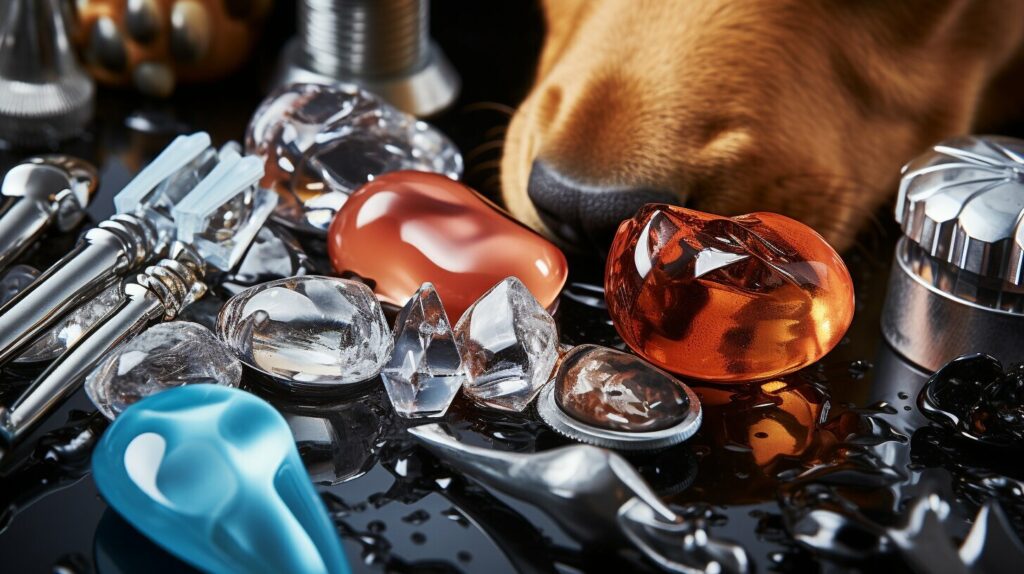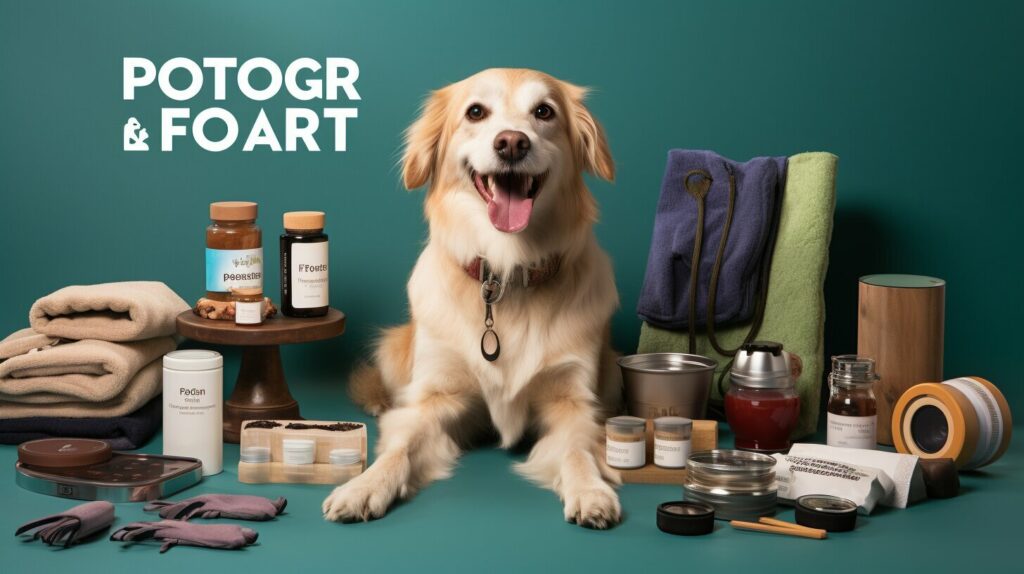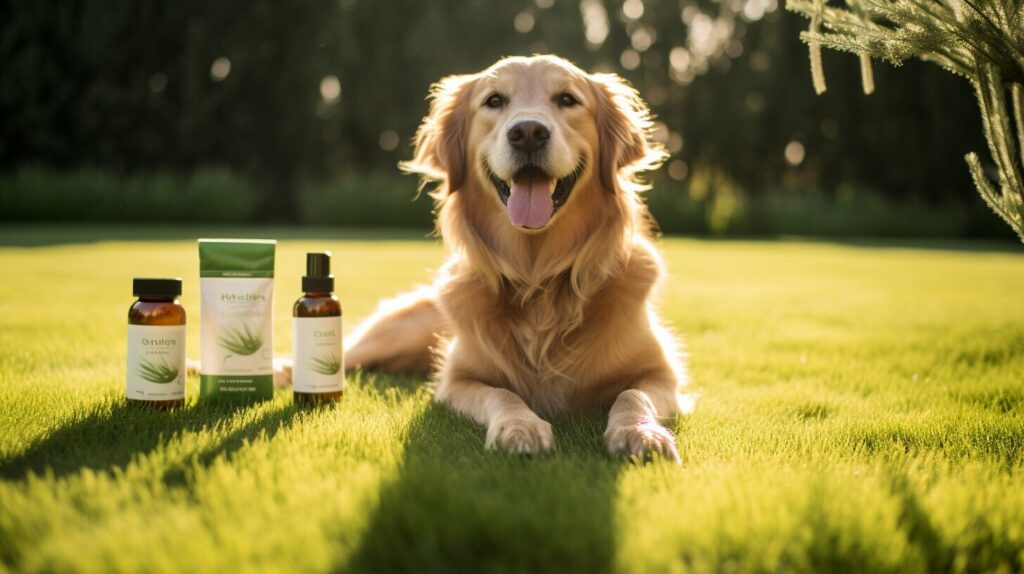If you have a furry companion, you’ve likely noticed small appendages on the inside of their legs. These are dew claws, and they are present on the front and/or hind legs of many dog breeds. While some dogs are born without dew claws, others have them on all four legs.
Dew claws are often misunderstood and neglected by dog owners, but they actually serve an important purpose. In this section, we will cover the basics of dogs‘ dew claws, their function, and how to properly care for them.
Key Takeaways:
- Dew claws are small appendages on the inside of a dog’s leg.
- Not all dog breeds have dew claws, and some breeds have them on only their front or hind legs.
- Dew claws serve an important function for dogs and require proper care.
The Function of Dew Claws in Dogs
Dew claws are the extra digits found on the inside of your dog’s front and hind legs, above their paws. While not all dogs have dew claws, those that do serve a purpose beyond simply adding to their cuteness.
The function of dew claws in dogs can vary depending on the breed. However, in general, dew claws offer several benefits to your furry friend.
Balance and Traction
Dew claws can act as a stabilizer for your dog when running and turning corners. The extra digit helps to provide added traction on slick surfaces, especially when cutting and changing direction quickly.
Gripping Ability
Dew claws also provide additional gripping ability to help your dog grasp and hold objects, such as toys or bones. This is particularly useful for dogs who enjoy playing fetch or chewing on rawhide chews.
Assist in Climbing
For dogs who enjoy hiking or climbing, dew claws can be a useful tool. The extra digits act as anchors when your dog is scaling up or down steep inclines.
While dew claws may not seem like much, they can make a big difference in your dog’s overall agility and mobility. By understanding their function and importance, you can better care for your dog’s dew claws and ensure your pup has a happy and active life.
Caring for Your Dog’s Dew Claws
Dew claws are often overlooked when it comes to dog grooming, but keeping them clean and trimmed is essential for your dog’s health and well-being. Regular maintenance will prevent issues such as overgrowth, infections, and injuries.
Grooming Dew Claws in Dogs
Trimming your dog’s dew claws is similar to trimming their nails. However, dew claws are not in contact with the ground like the other nails, so they may require less frequent trimming. You should trim them when they start to curl or grow too long, as this can cause discomfort or snag on objects.
To groom your dog’s dew claws:
- Use sharp, clean dog nail clippers and styptic powder to stop bleeding if you accidentally cut the quick.
- Hold your dog’s paw firmly and locate the dew claw.
- Trim the nail to just above the quick, which is the pink part of the nail that contains blood vessels and nerves.
- If your dog is reluctant to have their dew claws trimmed, try offering them treats or distracting them with toys.
Keeping Dew Claws Clean in Dogs
Dew claws can accumulate dirt, debris, and bacteria, leading to infections and odors. You should clean your dog’s dew claws regularly to prevent these issues.
To clean your dog’s dew claws:
- Use warm water and a mild soap to clean around the dew claw.
- Dry the area thoroughly with a clean towel.
- Apply an antiseptic solution if your dog has any cuts or scratches around the dew claw.
Regular grooming and cleaning of your dog’s dew claws will ensure that they remain healthy and comfortable. However, if you notice any signs of inflammation, swelling, or discharge, you should contact your veterinarian immediately.
Common Issues with Dew Claws
Dew claws are a unique feature of dogs that can sometimes cause problems. Here are some common issues you may encounter with your dog’s dew claws:
Overgrowth
Overgrowth of the dew claw can result in the nail curving around and piercing the pad of the foot. If left untreated, this can cause pain, infection, and even lameness. Regularly trimming your dog’s dew claws can help prevent overgrowth.
Injuries
Dogs can sometimes injure their dew claws by catching them on objects or getting them stuck in tight spaces. This can cause pain, bleeding, and even infection. If your dog has injured their dew claw, it is important to seek veterinary attention.
Infections
If your dog’s dew claw becomes infected, it can be very painful and cause swelling, redness, and discharge. Infections can be caused by bacteria or fungi and may require antibiotics or antifungal medication.
Abnormalities
In some cases, dogs may be born with abnormally shaped or positioned dew claws. This can cause discomfort, difficulty walking, and even lead to injuries. Your vet can assess the situation and recommend treatment options.
It is important to monitor your dog’s dew claws for any signs of issues and address them promptly. Regularly trimming and grooming your dog’s dew claws can help prevent many of these common problems. If you notice any issues, don’t hesitate to seek veterinary attention.
Dew Claw Removal in Dogs
Dew claw removal in dogs is a surgical procedure where the dew claw is completely removed. This procedure is usually done when the dew claw is causing discomfort or injury to the dog, such as when it gets caught in things or grows too long and curves inward, causing pain and infection. It is also sometimes done for cosmetic reasons, especially in breeds where dew claws are not considered desirable for show purposes.
Although dew claw removal is a common practice, it is not without risks. The procedure involves cutting through bone and tissue, and there is a risk of complications such as bleeding, infection, and improper healing. Recovery time can also be lengthy and uncomfortable for the dog.
Before considering dew claw removal, it is important to weigh the potential risks and benefits and consult with a veterinarian. Some dogs may be able to manage their dew claws with proper trimming and care, while others may require surgical intervention.
If dew claw removal is deemed necessary, it is important to choose a qualified and experienced veterinarian who can perform the procedure safely and effectively. You may want to ask for references or look up reviews to ensure you are selecting a reputable and trustworthy professional.
Overall, dew claw removal is a serious decision that should be carefully considered and discussed with a veterinarian. It is important to prioritize the health and wellbeing of your dog and make the best decision for their individual needs.
Alternative Approaches to Dew Claw Management
If you’re not comfortable with dew claw removal or your dog’s breed doesn’t require it, there are alternative ways to manage your dog’s dew claws. These methods can help keep your dog’s claws healthy and prevent any accidental injuries.
Regular Trimming
Regular trimming of your dog’s dew claws can help prevent overgrowth and keep them from snagging on things. Use a quality pair of dog nail clippers and make sure to avoid cutting into the quick (the pink part of the nail that contains blood vessels). If you’re not comfortable doing it yourself, ask your veterinarian or a professional groomer for assistance.
Protective Covers
Protective covers, such as nail caps or boots, can also help protect your dog’s dew claws from injury. Nail caps are applied over your dog’s nails, while boots cover the entire paw. These can be especially useful if your dog is very active or if you live in an area with rough terrain.
Breed-specific Considerations
Some breeds, such as the Great Pyrenees, have double dew claws on their hind legs, which require special attention. These claws can grow into the paw pad if not trimmed regularly. Other breeds, such as the Beauceron, are required to have their dew claws intact for show purposes. Make sure to research your dog’s breed to determine if there are any specific dew claw considerations.
By taking these alternative approaches to dew claw management, you can help keep your dog’s claws healthy and prevent any accidental injuries. Always consult with your veterinarian if you have any concerns about your dog’s dew claws.
Training and Socializing Dogs with Dew Claws
When it comes to training and socializing your dog, their dew claws can play a role in their behavior and interactions with others. It’s important to teach your dog how to use their dew claws appropriately and ensure they don’t accidentally cause harm to themselves or others.
Start by introducing your dog to different surfaces and terrains to help them develop their balance and traction. This can include grass, gravel, or sand. Encourage them to walk and run on these surfaces, paying attention to how they use their dew claws for grip and stability.
You can also incorporate exercises that challenge your dog’s balance, such as sitting on a wobble board or balance disc. This can help improve their overall coordination and strengthen their dew claw muscles.
When socializing your dog, monitor their interactions with other dogs and people to ensure they don’t accidentally scratch or injure others with their dew claws. It’s important to establish boundaries with your dog and teach them appropriate behavior during playtime.
If your dog has a tendency to scratch or have their dew claws caught on clothing or furniture, consider using protective covers or trimming their dew claws regularly. Consulting with a professional dog groomer or veterinarian can also provide useful tips and guidance on appropriate dew claw management for your specific breed.
Dew Claws in Different Dog Breeds
Dew claws can vary in their appearance and function from breed to breed. Some breeds have dew claws on their front and hind legs, while others only have them on their front legs. Some breeds may naturally have double dew claws, which means they have two dew claws on the same limb.
In general, dew claws are more common in breeds that were historically used for hunting, herding, or as working dogs. These include breeds such as Great Pyrenees, Saint Bernards, and Beaucerons.
Some breed standards require dew claws to be removed for show purposes, such as in Weimaraners and Australian Shepherds. However, this practice is controversial and not universally accepted.
It’s important to consider breed-specific factors when it comes to your dog’s dew claws. For example, breeds with larger bodies and heavier frames may put more strain on their dew claws, which can increase the risk of injury or other issues. Likewise, breeds that are more active or have jobs that require a lot of running and jumping may rely more heavily on their dew claws for stability and traction.
If you have questions about your specific breed and their dew claws, it’s important to consult with your veterinarian or a qualified breeder for guidance.
Tips for Choosing a Vet for Dew Claw Related Issues
If you are experiencing any dew claw related issues with your dog, it’s crucial to find the right veterinarian for proper diagnosis and treatment. Here are some tips for choosing the best vet for your dog’s dew claw issues:
- Look for a vet with experience: Choosing a vet who has experience in treating dew claw issues is important. It’s best to look for a vet who has treated similar cases to yours before.
- Ask for referrals: Referrals from fellow pet owners or breeders can be a great way to find a good vet. Ask around in your local community for recommendations and experiences with vets who have treated dew claw issues.
- Research online reviews: Check online reviews of veterinary clinics in your area to see what other pet owners think of their services. Make sure to read both positive and negative reviews before making a decision.
- Consider location and availability: Choosing a vet that is conveniently located near your home or work is important. Also, consider their availability for emergency appointments or after-hours care.
- Check their qualifications: Ensure that the vet you choose is licensed and certified by the relevant authorities.
- Communicate with the vet: Schedule a consultation with the vet to discuss your dog’s dew claw issues. This will help you determine if they are the right fit for your dog’s needs and if they have a treatment plan that aligns with your preferences.
By following these tips and doing your research, you can find a veterinarian who can provide your dog with the best care for their dew claw issues.
Conclusion
Now that you have a better understanding of your dog’s dew claws, you can take steps to properly care for them. Remember, dew claws serve an important purpose in helping your furry friend maintain their balance and grip. Regular grooming and cleaning can prevent issues such as overgrowth and infections. In the event that your dog experiences dew claw-related problems, it’s important to seek the advice of a qualified veterinarian.
While some dog owners opt for dew claw removal, it’s important to weigh the risks and benefits before making a decision. Alternative approaches such as trimming and protective covers can also be effective in managing dew claws. And when it comes to training and socializing your dog, be sure to include proper dew claw usage in their training regimen.
Each breed of dog has its own unique dew claw configuration, so be sure to research your specific breed’s needs. And when choosing a vet, keep in mind any potential dew claw-related issues that may arise.
Overall, understanding and caring for your dog’s dew claws can have a positive impact on their health and well-being. By taking an informed and proactive approach, you can ensure that your furry friend stays happy and healthy for years to come.
FAQ
Q: What are dew claws?
A: Dew claws are the extra digit or thumb-like structures that are found higher up on a dog’s leg, typically on the inside of the front legs and occasionally on the hind legs as well.
Q: Do all dogs have dew claws?
A: No, not all dogs have dew claws. Some dog breeds are born without dew claws, while others may have them but have them removed shortly after birth for various reasons.
Q: What is the purpose of dew claws in dogs?
A: Dew claws can serve several functions for dogs. They can help with balance, provide additional traction when running or climbing, and assist with gripping objects or prey.
Q: How should I care for my dog’s dew claws?
A: It is important to regularly check and trim your dog’s dew claws to prevent them from becoming overgrown. Additionally, you should keep them clean and free from debris to avoid any potential infections.
Q: What are some common issues with dew claws?
A: Some common issues with dew claws in dogs include overgrowth, injuries from catching or tearing, and infections. Regular maintenance and monitoring can help prevent or address these issues.
Q: Can dew claws be removed?
A: Yes, dew claw removal is a procedure that can be done for various reasons, such as preventing future injuries or conforming to breed standards for certain dog shows. However, it is a surgical procedure that should be carefully considered.
Q: Are there alternative approaches to dew claw management?
A: Yes, alternative approaches to dew claw management include regular trimming, using protective covers or boots, and considering breed-specific considerations. These methods can help maintain the health and functionality of the dew claws.
Q: How should I train and socialize a dog with dew claws?
A: Training and socializing dogs with dew claws should involve teaching them to use their dew claws appropriately and preventing any accidental injuries. Positive reinforcement and proper socialization techniques are key in this process.
Q: Do all dog breeds have dew claws?
A: No, not all dog breeds have dew claws. Some breeds naturally have dew claws, while others may have them removed for show purposes or due to breed standards.
Q: What should I consider when choosing a vet for dew claw related issues?
A: When choosing a vet for dew claw-related issues, it is important to consider their experience and expertise in handling such cases. You should also ensure that the vet is compassionate and knowledgeable about alternative approaches to dew claw management.



